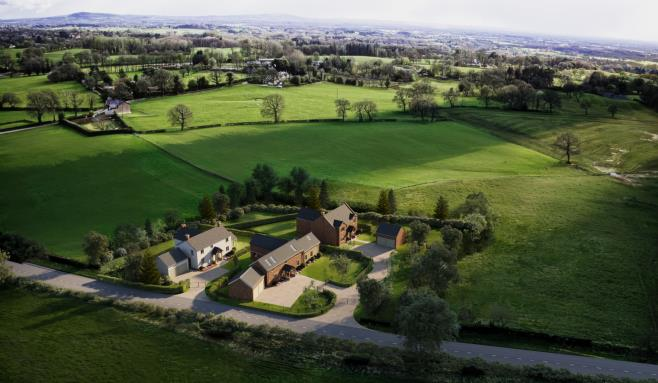Bridging Finance in 2025: A Defining Year – and a Defining Moment for CapitalRise
Bridging finance continues to evolve rapidly, and 2025 is proving to be a pivotal year for the sector. As someone deeply embedded in this space, I’ve seen firsthand how developers, lenders and intermediaries are adapting to new challenges and opportunities. In this article, I share my perspective on the trends shaping the market, the role bridging finance is playing, and how CapitalRise is responding with a refined proposition tailored to today’s needs.
As highlighted in a recent Bridging & Commercial article from Vic Jannels, CEO at the BDLA, 2025 is shaping up to be a landmark year for the bridging finance sector. According to the latest figures from BDLA’s Bridging Trends Q1 2025 report, bridging loan applications surged to £18.34bn, marking a 55.3% increase from the previous quarter – indicating not just resilience but renewed momentum in the short-term lending market.
At CapitalRise, we’re seeing this shift first-hand. So far this year (January-June 2025), 42% of our lending has been short-term finance, compared to 33% across our entire loan book since inception in 2016. This uptick reflects a broader market trend: developers and investors are increasingly turning to bridging finance to unlock opportunities in a market still navigating high interest rates, planning delays, and evolving buyer demands.
Why the Surge in Bridging?
Several factors are driving this demand. First, the UK’s chronic housing shortage continues to underpin development activity, particularly in the South of England. Despite economic headwinds, the fundamentals remain strong: limited supply, high demand, and a growing appetite for flexible, fast funding solutions.
Second, the planning system remains slow and complex. Bridging loans are increasingly being used to secure sites while planning is achieved, or to refinance assets mid-development as timelines shift. In a market where agility is key, short-term finance is proving indispensable.
Third, the rise of hybrid working and changing space requirements is reshaping the built environment. Developers are repositioning assets, such as commercial to residential or outdated stock to modern, energy-efficient schemes. Equally, investors are taking a holistic view of their current stock to produce higher yields. Bridging finance is often the first step in these transformations.
CapitalRise: Evolving to Meet the Moment
While CapitalRise is best known for funding prime residential developments in London and the South East, we’ve been expanding our existing bridging proposition to meet this growing demand. In fact, a newly refined bridging product will be launching soon – watch this space.
Diversification in Action
This evolution is part of a broader diversification strategy at CapitalRise. In recent months, for example, we’ve funded:
- A £6.3m bridge for a hotel repositioning in Gloucester
- A £4m bridge for a commercial-to-residential planning uplift in North Kensington
- A £2.2m development loan for a net-zero eco-home in Epping Forest
These deals span new asset classes, borrower profiles, and geographies – but they share a common thread: supporting experienced developers with bespoke finance solutions.
Looking Ahead
The BDLA’s data suggests that bridging finance is not just growing, it’s maturing. With a collective loan book nearing £13bn, the sector is becoming more institutional, more professional, and more essential.
At CapitalRise, we welcome this evolution. We believe bridging finance has a vital role to play in unlocking value, enabling regeneration, and accelerating the delivery of high-quality projects. With our ever-expanding product range, experienced team, and relationship-led approach, we’re well-positioned to support that growth.
As 2025 unfolds, we’re excited to play our part in shaping the future of short-term property finance.By Lorenzo Satchell, Director of Sales at CapitalRise
Bridging finance continues to evolve rapidly, and 2025 is proving to be a pivotal year for the sector. As someone deeply embedded in this space, I’ve seen firsthand how developers, lenders and intermediaries are adapting to new challenges and opportunities. In this article, I share my perspective on the trends shaping the market, the role bridging finance is playing, and how CapitalRise is responding with a refined proposition tailored to today’s needs.
As highlighted in a recent Bridging & Commercial article from Vic Jannels, CEO at the BDLA, 2025 is shaping up to be a landmark year for the bridging finance sector. According to the latest figures from BDLA’s Bridging Trends Q1 2025 report, bridging loan applications surged to £18.34bn, marking a 55.3% increase from the previous quarter – indicating not just resilience but renewed momentum in the short-term lending market.
At CapitalRise, we’re seeing this shift first-hand. So far this year (January-June 2025), 42% of our lending has been short-term finance, compared to 33% across our entire loan book since inception in 2016. This uptick reflects a broader market trend: developers and investors are increasingly turning to bridging finance to unlock opportunities in a market still navigating high interest rates, planning delays, and evolving buyer demands.
Why the Surge in Bridging?
Several factors are driving this demand. First, the UK’s chronic housing shortage continues to underpin development activity, particularly in the South of England. Despite economic headwinds, the fundamentals remain strong: limited supply, high demand, and a growing appetite for flexible, fast funding solutions.
Second, the planning system remains slow and complex. Bridging loans are increasingly being used to secure sites while planning is achieved, or to refinance assets mid-development as timelines shift. In a market where agility is key, short-term finance is proving indispensable.
Third, the rise of hybrid working and changing space requirements is reshaping the built environment. Developers are repositioning assets, such as commercial to residential or outdated stock to modern, energy-efficient schemes. Equally, investors are taking a holistic view of their current stock to produce higher yields. Bridging finance is often the first step in these transformations.
CapitalRise: Evolving to Meet the Moment
While CapitalRise is best known for funding prime residential developments in London and the South East, we’ve been expanding our existing bridging proposition to meet this growing demand. In fact, a newly refined bridging product will be launching soon – watch this space.
Diversification in Action
This evolution is part of a broader diversification strategy at CapitalRise. In recent months, for example, we’ve funded:
- A £6.3m bridge for a hotel repositioning in Gloucester
- A £4m bridge for a commercial-to-residential planning uplift in North Kensington
- A £2.2m development loan for a net-zero eco-home in Epping Forest
These deals span new asset classes, borrower profiles, and geographies – but they share a common thread: supporting experienced developers with bespoke finance solutions.
Looking Ahead
The BDLA’s data suggests that bridging finance is not just growing, it’s maturing. With a collective loan book nearing £13bn, the sector is becoming more institutional, more professional, and more essential.
At CapitalRise, we welcome this evolution. We believe bridging finance has a vital role to play in unlocking value, enabling regeneration, and accelerating the delivery of high-quality projects. With our ever-expanding product range, experienced team, and relationship-led approach, we’re well-positioned to support that growth.
As 2025 unfolds, we’re excited to play our part in shaping the future of short-term property finance.




